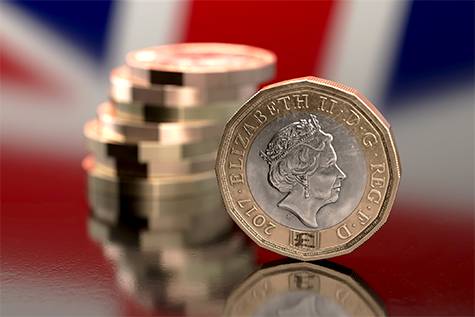The British pound rose on Friday against a basket of global currencies, resuming the gains that had paused yesterday against the U.S. dollar, on its way toward touching its highest level in five weeks again, and on the verge of achieving a second consecutive weekly gain.
The sterling’s strong performance this week comes thanks to the release of a series of strong economic data in the United Kingdom, especially those related to gross domestic product, which showed that the British economy grew better than expected during the second quarter of this year.
These data indicate continued pressure on monetary policymakers at the Bank of England, which led to a decline in expectations for a 25-basis-point cut in British interest rates in September.
Price outlook
• Pound exchange rate today: The pound rose against the dollar by 0.15% to $1.3551, from the opening price of $1.3533, and recorded the lowest level at $1.3526.
• On Thursday, the pound lost 0.35% against the dollar, in its first loss in the past three days, after having earlier in the session recorded a five-week high at $1.3595.
• Apart from correction and profit-taking, the pound declined in parallel with most major and minor currencies, following the release of strong U.S. producer price data.
Weekly trading
Over the course of this week, which officially ends with today’s settlement, the pound is up so far by 0.75% against the U.S. dollar, on the verge of achieving a second consecutive weekly gain.
UK economy
Data released in London on Thursday showed that the British economy grew by 0.3% in the second quarter, surpassing market expectations of 0.1% growth, after recording 0.7% growth in the first quarter.
On a monthly basis, the British economy grew by 0.4% in June, better than market expectations of 0.2% growth, after stagnating at -0.1% in May.
The British economy is expected to make further progress in the coming quarters, supported by a potential improvement in economic indicators and stable financial conditions, especially after the UK government reached a major trade agreement with the United States, which is expected to boost exports and stimulate foreign investment.
UK interest rates
• Following the above data, pricing of the likelihood of the Bank of England cutting British interest rates by 25 basis points at its September meeting fell from 30% to below 20%.
• After a hawkish Bank of England meeting last week, traders reduced their bets on BoE easing and anticipated additional cuts of 17 basis points this year.


